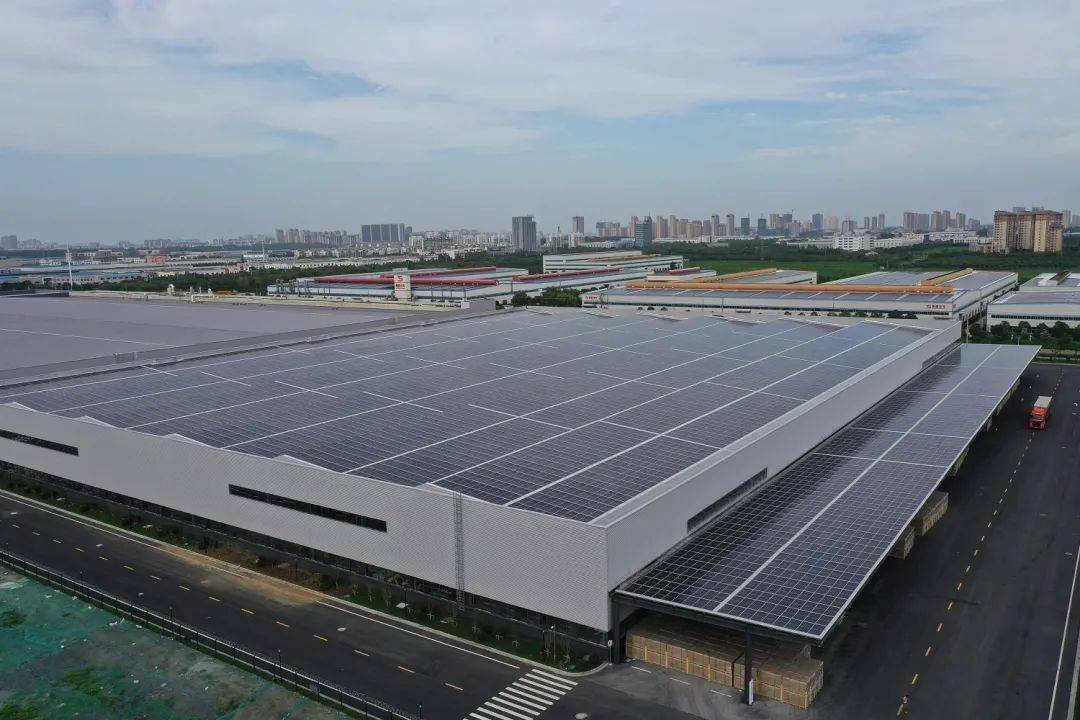(1)电池测试
(1) Battery test
由于电池片制作条件的随机性,生产出来的电池性能不尽相同,所以
天能瓦认为,为了有效的将性能一致或相近的电池组合在一起,所以应根据其性能参数进行分类;电池测试即通过测试电池的输出参数(电流和电压)的大小对其进行分类。以提高电池的利用率,做出质量合格的电池组件。
Due to the randomness of the manufacturing conditions of the battery chips, the performance of the batteries produced are different, so Tiannengwa believes that in order to effectively combine the batteries with the same or similar performance, they should be classified according to their performance parameters; The battery test is to classify the battery by testing its output parameters (current and voltage). In order to improve the utilization rate of battery and make qualified battery components.
(2)正面焊接
(2) Front welding
将汇流带焊接到电池正面(负极)的主栅线上,汇流带为镀锡的铜带,我们使用的焊接机可以将焊带以多点的形式点焊在主栅线上。焊接用的热源为一个红外灯(利用红外线的热效应)。焊带的长度约为电池边长的2倍。多出的焊带在背面焊接时与后面的电池片的背面电极相连。
The bus bar is welded to the main grid line on the front (negative) side of the battery. The bus bar is tinned copper strip. The welding machine we use can spot weld the bus bar on the main grid line in the form of multiple points. The heat source for welding is an infrared lamp (using the thermal effect of infrared ray). The length of the welding strip is about twice the length of the battery side. The extra welding strip is connected with the back electrode of the rear battery panel during the back welding.
(3)背面串接
(3) Back serial connection
背面焊接是将电池串接在一起形成一个组件串,采用的工艺是手动的,电池的定位主要靠一个膜具板,上面有放置电池片的凹槽,槽的大小和电池的大小相对应,槽的位置已经设计好,不同规格的组件使用不同的模板,操作者使用电烙铁和焊锡丝将“前面电池”的正面电极(负极)焊接到“后面电池”的背面电极(正极)上,这样依次串接在一起并在组件串的正负极焊接出引线。
The back welding is to connect the batteries in series to form a component string. The process is manual. The positioning of the battery mainly depends on a membrane plate, on which there is a groove for placing the battery. The size of the groove corresponds to the size of the battery. The position of the groove has been designed, and different modules of different specifications use different templates, The operator uses an electric soldering iron and soldering wire to weld the front electrode (negative electrode) of the "front battery" to the back electrode (positive electrode) of the "rear battery", so as to connect them in series and weld the lead wire at the positive and negative electrodes of the assembly string.

(4)层压敷设
(4) Laminated laying
背面串接好且经过检验合格后,将组件串、玻璃和切割好的EVA、玻璃纤维、背板按照一定的层次敷设好,准备层压。玻璃事先涂一层试剂(primer)以增加玻璃和EVA的粘接强度。敷设时保证电池串与玻璃等材料的相对位置,调整好电池间的距离,为层压打好基础。(敷设层次:由下向上:钢化玻璃、EVA、电池片、EVA、玻璃纤维、背板)。
After the back side is connected in series and passed the inspection, lay the component string, glass and cut EVA, glass fiber and back plate in a certain layer and prepare for lamination. The glass is coated with a layer of reagent in advance to increase the bonding strength of glass and EVA. During laying, ensure the relative position of battery string and glass and other materials, adjust the distance between batteries, and lay a good foundation for lamination. (Laying level: from bottom to top: tempered glass, EVA, battery, EVA, glass fiber, back plate).
(5)组件层压
(5) Component lamination
将敷设好的电池放入层压机内,通过抽真空将组件内的空气抽出,然后加热使EVA熔化将电池、玻璃和背板粘接在一起;冷却取出组件。层压工艺是组件生产的关键一步,层压温度层压时间根据EVA的性质决定。我们使用快速固化EVA时,层压循环时间约为25分钟。固化温度为150℃。
Put the laid battery into the laminator, extract the air in the module by vacuuming, and then heat it to melt the EVA to bond the battery, glass and backplane together; Cool down and take out the assembly. The lamination process is a key step in the production of components. The lamination temperature and lamination time are determined by the nature of EVA. When we use rapid curing EVA, the lamination cycle time is about 25 minutes. The curing temperature is 150 ℃.
(6)修边
(6) Trimming
层压时EVA熔化后由于压力而向外延伸固化形成毛边,所以层压完毕应将其切除。
During lamination, EVA will extend outward and solidify to form burr due to pressure after melting, so it should be cut off after lamination.
(7)装框
(7) Framing
类似与给玻璃装一个镜框;给玻璃组件装铝框,增加组件的强度,进一步的密封电池组件,延长电池的使用寿命。边框和玻璃组件的缝隙用硅酮树脂填充。各边框间用角键连接。
It is similar to installing a glass frame; Install aluminum frame on the glass module to increase the strength of the module, further seal the battery module and extend the service life of the battery. The gap between the frame and the glass component is filled with silicone resin. The borders are connected with corner keys.
(8)焊接接线盒
(8) Welded junction box
在组件背面引线处焊接一个盒子,以利于电池与其他设备或电池间的连接。
Weld a box at the lead on the back of the module to facilitate the connection between the battery and other devices or batteries.
(9)高压测试
(9) High voltage test
高压测试是指在组件边框和电极引线间施加一定的电压,测试组件的耐压性和绝缘强度,以保证组件在恶劣的自然条件(雷击等)下不被损坏。
High voltage test refers to applying a certain voltage between the frame of the module and the electrode lead to test the withstand voltage and insulation strength of the module, so as to ensure that the module will not be damaged under harsh natural conditions (lightning, etc.).
(10)组件测试
(10) Component test
测试的目的是对电池的输出功率进行标定,测试其输出特性,确定组件的质量等级。主要就是模拟太阳光的测试Standardtestcondition(STC),一般一块电池板所需的测试时间在7-8秒左右。更多相关内容就来我们网站
//tianjibiotech.com咨询!
The purpose of the test is to calibrate the output power of the battery, test its output characteristics and determine the quality grade of the module. It is mainly to simulate the standard test condition (STC) of sunlight. Generally, the test time required for a battery panel is about 7-8 seconds. Come to our website for more relevant content //tianjibiotech.com consulting service


